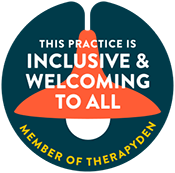Pride Month, traditionally celebrated in June, is a time to honor the resilience, diversity, and strength of the LGBTQIA+ community. It is a celebration of identity, love, and visibility but it is also a reminder of the ongoing challenges many in the community still face. For those navigating the complexities of coming out, discrimination, or seeking acceptance, Pride can stir a mix of emotions, from joy and empowerment to grief and vulnerability. That is why mental health support that truly understands and affirms LGBTQIA+ identities is more important than ever.
Affirming therapy goes beyond tolerance- it is about creating a safe, supportive space where individuals are seen, respected, and celebrated for who they are. At Anchor Therapy, our LGBTQIA+ therapists recognize that mental health care must be inclusive, culturally competent, and deeply attuned to the unique experiences of LGBTQIA+ clients. During Pride Month and throughout the year, we are committed to providing therapy that uplifts and empowers- helping individuals not just survive, but thrive in their authentic selves!













